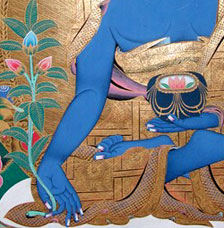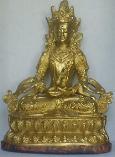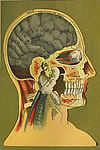Tibetan medicine is like a time-capsule, holding intact the ancient Greek medical system, which it assimilated via Persia; the Ayurvedic medical tradition, which it imported with Buddhism from India; and many forms of Chinese medicine which were gradually incorporated. These layers of medical knowledge and traditions merged with pre-Buddhist shamanic traditions and have continued to develop up to the present as a thriving and highly effective indigenous medical system.
The philosophical basis of Tibetan medicine is rooted in Buddhism. The historical Buddha Shakyamuni, sometimes called the Supreme Physician, is said to have first taught a healing system in India during the 6th century BCE. In many of his teachings, the Buddha used disease and healing as metaphors to illustrate his philosophy of the human condition. From the Buddhist perspective, physical illness is inextricably bound with mental, social and spiritual illness. Thus the Buddhist medical system is more than studies of anatomy, physiopathology and pharmacopoeia. It is a guide to 'right living' and involves the spiritual aspects of healing as well.
During the first half of the 7th century, Buddhism was adopted in Tibet by King Songsten Gampo. It was during his reign that physicians from India, China, Nepal, Byzantium and Persia were invited to Tibet for an international medical conference and to translate their medical texts into Tibetan. This became the basis for the founding of a sophisticated medical system in Tibet, and led to many years of academic and intellectual exchange.
To this spiritual and philosophical core, based on the unique concept of healing as developed by Buddhist philosophy, (which sees the mind as inextricably linked to all phenomena, including illness and wellness), the Tibetans added a whole array of ideas and concepts along with actual treatments and medications. This original blend created a complex system of healing which interweaves spiritual, 'magical' and rational healing practices based on the view of health as a harmonious balance between Man's deep relationship with his physical, mental, spiritual and natural worlds.
The Tibetan medical system developed a vast body of medical literature, the oldest surviving written system of medical psychiatry, an enormous herbal pharmacopoeia and a complete system of diagnosis and treatment. The diverse and complex elements that constitute Tibetan medicine -- its highly refined ethical principles, its philosophical and psychological structure -- deserve serious attention, study, documentation and preservation by the international scientific community.

Sleep and the Inner Landscape,
An Interview about
Dreams and Tibetan Medicine with
the Tibetan Physician, Dr. Yeshe
Dhonden
|
|
|
|

"Tibetan incense, medicinal powder, and
Tibetan 'precious pills' are in
great demand here," said one police officer who asked not to be
named.
"People believe that it can prevent the virus. And SARS hasn't spread
to Tibet."
Radio Free Asia-May 7, 2003
|
|
|
|



Handbook of Traditional Tibetan Drugs: Their Nomenclature,Composition, Use and Dosage
|
|


